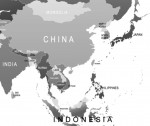Introduction
According to the World Health Organization (WHO), there are around 430 million diabetics worldwide, a number that will grow to 650 million by 2040. 60% of diabetics are Asian, and diabetes is currently the 8th leading cause of death in region. By 2030, diabetes will become the 6th leading cause of death in Asia. Furthermore, diabetes increases the risk of other health issues, including stroke and heart disease.
The diabetes device market was worth approximately $15 billion worldwide in 2016, with the Asian market accounting for $3 billion. The Asian diabetes device market, which includes products such as lancets, insulin pumps, and glucose monitoring devices, is growing at a rate of over 8% annually. In 2016, the Asian diabetes drug market was worth over $8 billion of the $25 billion global diabetes drug market. The diabetes drug market is expected to double by 2030 with the rising number of diabetics. Diabetes drugs include insulin, but also medications that help with other functions such as breaking down sugar and decreasing the liver’s sugar production. The global diabetes drug market is also growing at an annual rate of over 6%, with China’s diabetes drug market growing the fastest at around 10% annually.
Regional Markets
China
China has the world’s largest diabetic population. While China accounts for one-fifth of the global population, one-third of all adult diabetics are Chinese. In 2016, an estimated 110 million Chinese adults had diabetes, and an estimated 150 million Chinese adults will have diabetes by 2040. Diabetes in China is primarily caused by poor diet and a sedentary lifestyle. Diabetes has become a major public health problem. The WHO estimates that China spends $25 billion a year on diabetes management.
India
India has the second-highest number of diabetics in the world after China. Over 15% of diabetics worldwide are Indian. Diabetes in India used to primarily affect affluent individuals. However, recent studies indicate that an increasing number of rural and urban poor Indians are also developing Type II diabetes. The prevalence of gestational diabetes in India is also on the rise. A recent study from 2017 reported that 15% of pregnant women in Hyderabad, one of India’s major cities, had gestational diabetes.
Southeast Asia
Diabetes in Southeast Asia is a growing health problem. There are nearly 30 million Southeast Asians with diabetes, and nearly 15 million more individuals with undiagnosed cases of diabetes. Vietnam has over 4 million diabetes patients alone, making it one of the top 10 countries with the highest diabetes rates in the world. In 2016, the WHO reported that 7% of all adult Indonesians had diabetes. Overall, the prevalence of diabetes in Southeast Asia is similar to that of the worldwide average.
Smoking and exposure to air pollution are two lifestyle trends that increase one’s risk of developing diabetes. Southeast Asian countries have some of the highest smoking rates in the world; in Indonesia, nearly 80% of all adult men smoke, while over 40% of adult men in Thailand, the Philippines, and Vietnam are smokers. Furthermore, coal use and peat fires in Indonesia spread pollution throughout the region.
Western Companies in Asia
There are an increasing number of companies manufacturing mobile applications and technology-based “smart” products for the management and treatment of diabetes. Mobile apps and smart products allow patients to better track and access data on their glucose levels and insulin dosages. Data tracking and analysis provide patients and doctors with insight into an individual’s specific condition, allowing for more personalized treatment. Additionally, as diabetes incidence rises, patients may find it difficult to meet with busy doctors. However, mobile apps can connect patients with healthcare professionals such as doctors and nutritionists.
Furthermore, as the number of diabetic patients rises, there is a higher demand for drugs and devices not only to treat the disease, but also to treat other health problems associated with diabetes, such as diabetic foot ulcers.
In July 2017, AVACEN Medical, a California-based medical device company, announced a partnership with Morulaa HealthTech, an Indian distributor, to register and sell the AVACEN 100 in India. The AVACEN 100 is a non-invasive medical device that helps circulation and can be used to treat diabetic foot ulcers. According to the American Podiatric Medical Association, diabetic foot ulcers affects approximately 15% of diabetes patients and can require amputation if left untreated. The Diabetic Foot Society in India reports that 200,000 diabetics require amputation as a result of diabetic foot ulcers.
Intarcia Therapeutics (Massachusetts) is developing a new diabetes therapy, ITCA 650, which is a mini-pump. ITCA 650 is a subcutaneous implant that delivers diabetes medication without the need for daily injections. In February 2017, Intarcia filed a New Drug Application with the US FDA for the ITCA 650. Intarcia has raised nearly $1.3 billion in funding for its pipeline of products, including a $215 million Series E funding round for the ITCA 650 in September 2016. Luxin Venture Capital, based in China’s Shandong Province, also participated in this funding round, adding to the list of Chinese-based venture capital firms and medtech companies investing in US medtech companies.
In November 2016, Brighter (Sweden) signed an agreement with Indostat Ooredoo, an Indonesia telecommunications company, and Ericsson to launch Brighter’s new Actiste product in Indonesia. Actiste is a single device that both measures a diabetic patient’s glucose level and injects insulin. Actiste also has a subscription-based mobile system that tracks the patient’s blood sugar and insulin levels for individuals to share with their families or doctors. The product is expected to launch in Indonesia in late 2017, after Actiste receives a EU CE mark.
Integrity Applications (Israel) is a medical device company that manufactures a non-invasive glucose monitoring device called GlucoTrack. Unlike traditional glucose monitoring devices, GlucoTrack can measure a patient’s glucose levels using an ear clip rather than through a blood sample. In November 2016, Integrity Apps announced that GlucoTrack had received regulatory approval from the Korean Ministry of Food and Drug Safety (MFDS). Integrity Applications has started commercial sales in Korea through its local distribution partner. Integrity Applications also has a distributor agreement with a partner in the Philippines.
In January 2016, Medtronic (Minnesota) announced a new partnership with the local government in Chengdu, China. Medtronic will open a manufacturing facility in Chengdu to produce and distribute its insulin pumps with SmartGuard™ technology. The SmartGuard™ technology can pause insulin delivery depending on the patient’s glucose levels, which helps patients when they are asleep and unable to make changes to their medication. The SmartGuard™ software will also be made available in Chinese, providing Chinese diabetics with access to advanced diabetic treatments.
In 2015, Medtronic also formed a partnership with a Korean company, Samsung, to develop mobile apps to work with Medtronic’s MiniMed Connect device and Samsung smartphones. The mobile apps provide users with the ability to view real-time information from their MiniMed and share information with doctors.
On the diabetes drug front, Eli Lilly (Indiana) also received approval from Korea’s MFDS for its diabetes drug, Trulicity. The MFDS approved Trulicity in May 2017, making Korea another country where Trulicity is available. Eli Lilly has also launched Trulicity in Japan and India. Used with insulin as a combination therapy, Trulicity is a drug for Type II diabetes patients.
Conclusion
Diabetes continues to be a major health problem in Asia. Diabetes no longer affects only wealthy Asian individuals. There are a growing number of low and middle income Asians who are developing the disease. With the increase of diabetes prevalence in Asia and the rise of Asia’s middle classes, the demand for newer and better treatments will provide opportunities for Western medtech companies.








